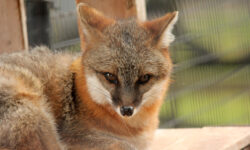By Stephen Press
Hometown Weekly Editor
Just last week, I was looking out the window of the Hometown Weekly newsroom when the approach of a ride-on lawnmower flushed a rabbit from under some brush coverage and into the open. The freshly-exposed critter seemed annoyed, but not all that put out; it projected an air of dismissive confidence, as though it had done its research ahead of time:
“Pfff, that’s a Deere Z700. Top of its class. I outrun those in my sleep. As long as it doesn’t mow any of the clover, we’re good.”
Its apparent haughtiness was entertaining, and it was also the culmination of a month’s worth of rabbit observations from friends in the area who swore, up and down, that these long-eared residents were out in uncommon abundance — and were becoming more and more brazen in their tolerance for humans.
“It’s four feet away from me,” one told me a few weeks ago about a rabbit snacking on his newly-seeded lawn. “It has no fear.”
“It has no fear of you, personally,” I offered. “You present neither the imminent threat of talons or teeth, nor do you have the ability to catch it on foot.”
“They just stare at you and eat with this maddening look,” another said. “And they don’t even move when I yell at them.”
“Did you expect them to engage you in nuanced conversation?”
New England’s rabbits are abundant in our communities — and if the eye test is correct, they’re especially numerous this year. They’re such a common sight that, chances are, unless you’re a small child (in which case, your interest revolves around chasing them), you’ve likely allowed them to blend into the background of our community. There are a lot of them — they do, after all, breed like rabbits.
Beyond that, there are more overtly entertaining critters in the “small, furry and common” category. Chipmunks and squirrels, for example, are hyperactive acrobats whose zany exploits may as well be out of an animated comedy. Rabbits, meanwhile, seem the mammalian equivalent of “My Dinner With Andre”.
What makes these abundant backyard animals worthy of your attention, then?
Well, firstly, there’s a chance that you could be seeing a rare, threatened species.
Rabbits in Hometown Weekly’s communities come from two distinct species: the Eastern cottontail and the New England cottontail. Despite looking virtually exactly alike, the two do not interbreed, and the Eastern cottontail’s dominance in the area is such that it has driven the New England cottontail into vulnerable species status, according to the International Union for Conservation of Nature (IUCN).
Often, the two are impossible to tell apart - however, there are some telltale signs that will clue you into whether you’re seeing a true New England native, or a competitor species. The most obvious sign: fifty percent of Eastern cottontails will have a white spot in the middle of their foreheads. Most of New England cottontails, meanwhile, will have a black spot in the same place. Don’t expect the New Englanders to be forthcoming, though: there are estimated to be a mere 13,000 individuals left, distributed throughout the entirety of New England and eastern New York. Given that New England alone is 71,988 square miles, that comes out to a raw average distribution of roughly one rabbit for every 5.5 square miles. In other words: if you’re lucky enough to spot one, you might also consider playing the lottery.
It is also good to note that rarity aside, rabbits do have guises other than that of gluttonous dinner guest. Among those guises: that of Casanova. Anyone who’s been fortunate enough to witness an Eastern cottontail’s courtship display, for example, will tell you that it presents the rabbits in an entirely different light. To a casual observer, it looks like a game or a dance. During the mating ritual, the usually staid and solitary critters suddenly become animated. Males will run at breakneck speed at the females and leap over them. The females, in turn, will run under them and rotate to face the males when they land. If you’ve seen it, it’s impossible to ignore, if only because it seems so out of character for the cottontail to be social and animated — but in fact, it is part of its natural disposition, albeit only when in love.
And if that’s all not enough for you?
Perhaps you might take a moment to appreciate that the rabbit is the quintessential perfect dinner guest — one who is impeccably well-mannered and neatly dressed at all times, despite a shy streak. While it’s playing wallflower at your backyard feast, it’s not disturbing any other visitors, making any annoying noises, or destroying your property. In fact, through its digging and browsing, the rabbit conditions the land to better sustain other species, contributing the biodiversity of the area.
New England’s rabbits don’t have much to say — or do — much of the time. They won’t wow you with gymnastic stunts or boundless energy. They will, however, calmly circulate around your property, keeping everything healthy and looking quite sharp while they do it.
What’s not to like?






















